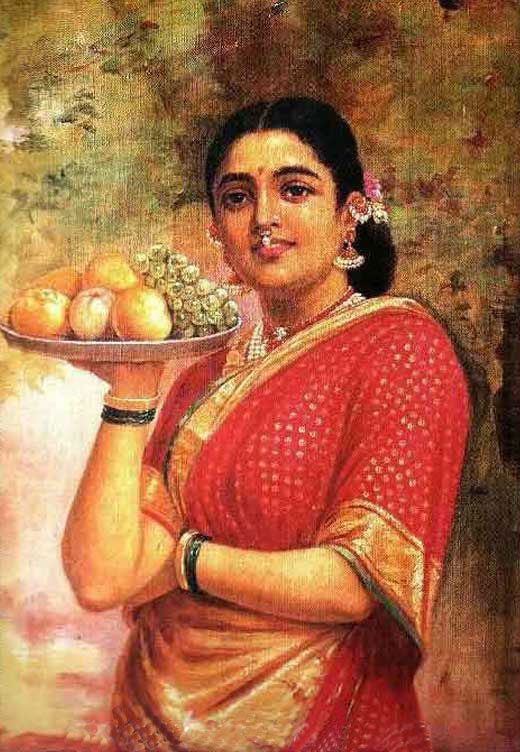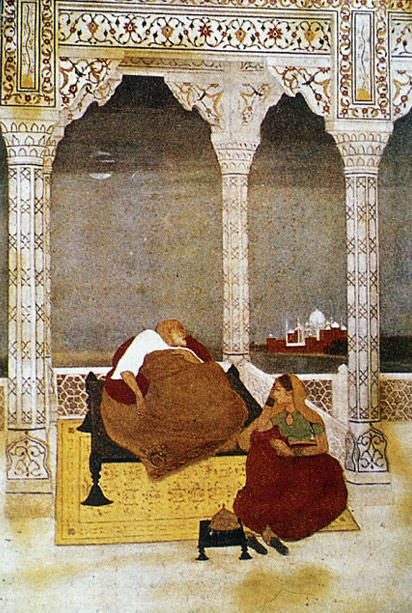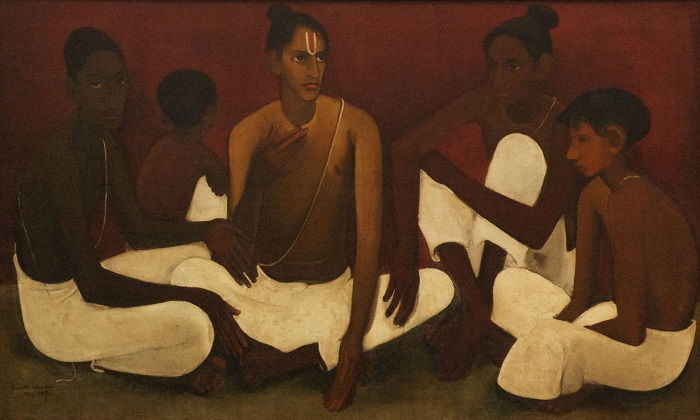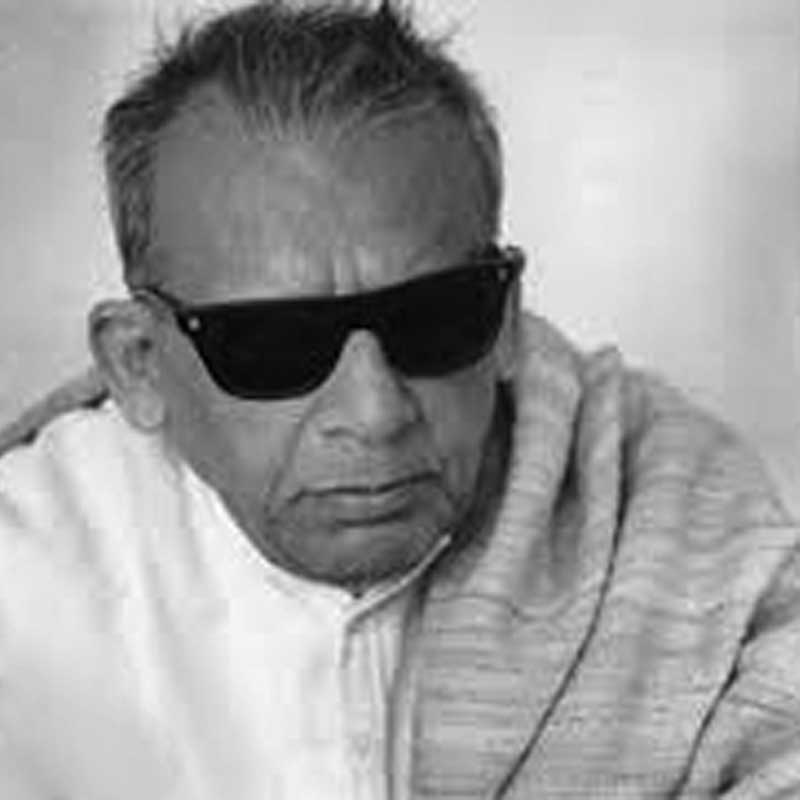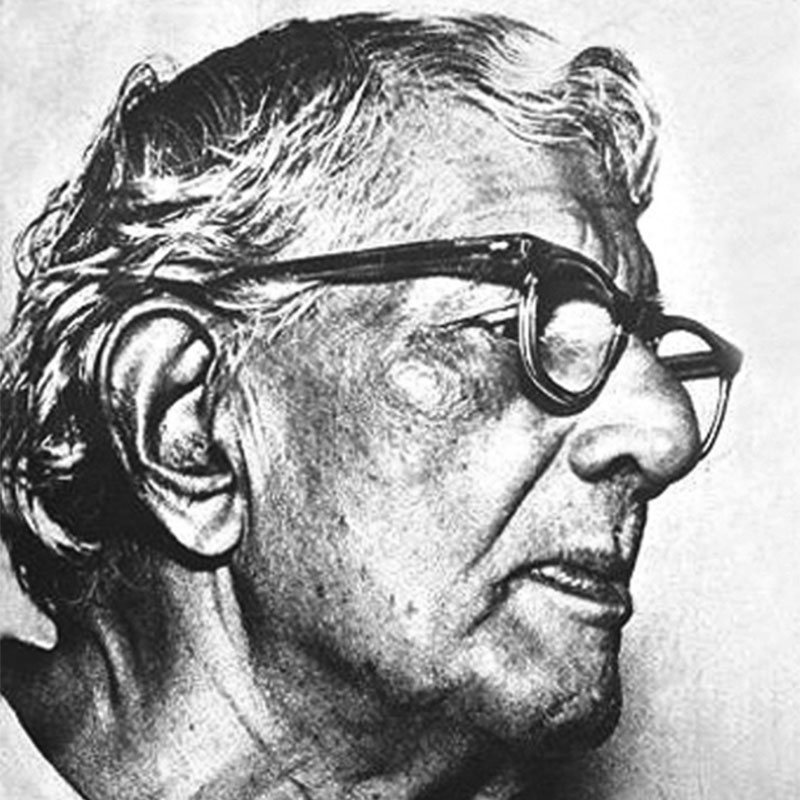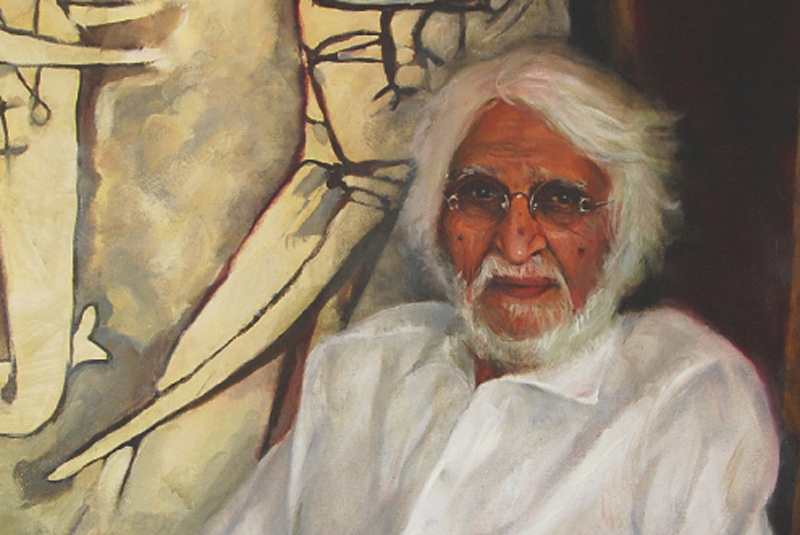- Home
- Culture of India
- Indian Art
- Indian Painters
Indian Painters
Indian Painters:
India is a
culturally rich country and has a rich history of art and architecture. The art
of painting dates back to the ancient times even before Indus civilisation
period. The caves paintings at Ajanta and Ellora are the evidence of the
paintings in the past. Here are some of the details of the painters from
ancient to present time:
Raja Ravi Varma
Birth Day: 29th April 1848
Birth Place: Travancore, Kerala
Death: 2nd October 1906.
Notable work: Shakuntala, Nair lady adorning her hair and many more
Raja Ravi
Varma was an Indian artists and famous Indian painter who is considered as one
of the greatest painter in the history of Indian art. His father was Ezhumavil
Neelakanthan Bhattatiripad and mother Umayamba Bayi Thampurathy. As an artist
Raja Ravi Varma was closely related to the royal family of Travancore. Raja
Ravi Varma used and made a fusion of Indian art with European techniques for
his paintings.
He started
learning basics of painting in Madurai and later on trained in water painting
by Rama Swami Naidu and learnt oil painting by Dutch portraitist Theodar
Jenson. Some of his prominent works include Mohini playing with the ball,
Yasoda and Krishna, lady lost in thought, Nala Damayanti, Dushyanta and
Shakuntala, Lord Krishna, Jatayu and many more.
Raja Ravi
Varma has received many awards for his work. Some of them include lord Curzon
honoured him with Kaisar-i-hind gold medal. The government of Kerala has
instituted an award called as Raja Ravi Varma Puraskaram which is awarded to
people who show excellence in the field of art and culture.
On his 65th
death anniversary India post has issued a postal stamp showing Raja Ravi Varma
and his famous painting Damayanti and Swan. Even after being criticised Raja
Ravi Varma is still considered as the most important and famous Indian artists.
Abanindranath Tagore:
Abanindranath
Tagore was born in Calcutta, India on August 7th 1871. His father
was Gunedranath Tagore and mother was Saudamini Tagore. He was the nephew of
Rabindranath Tagore. He was born in the family of artists, his grandfather and
his brother were also great artist. At the age of 12, Abanindranath Tagore
Calcutta School of art and started to use pastels and learn oil painting.
He was one of
the first person to include swadeshi movements in the Indian art. He created
Indian society of Oriental art and also established Bengal school of art. He
was also a note writer who wrote many books for children. Some of the books
written by him in Bengali include Rajkahini, Budo Angla, Nalak and Khirer
Putul.
Abanindranath
Tagore was more a swadeshi artist and believed that western art was more
materialistic. He believed that India has rich cultural values and should
return to spiritual values. Some of his works include Ashoka’s queen, tales of
Arabian nights, Buddha and Sujatha, Pushpa and Radha, moonrise in Mussouri
Hills. Tagore did the famous paintings called Arabian nights in the year 1930
which were basically of the Calcutta’s cosmopolitan life. Even to this date it
is considered as one of the finest work of Abanindranath Tagore. Tagore died at
the age of 80 on 5th December 1951.
Amrita Sher Gill:
Amrita Sher
Gill was a Hungarian Indian painter was born on 30th January 1913 at
Budapest, Hungary. Her parents were Umrao Singh Sher-Gil Majithia and Marie
Antoniette Gottesmann. At the beginning of her career Amrita Sher Gill did more
of western style of painting and later started with Indian subjects with
traditional method. Along with painting Sher Gil was an avid reader and
pianists. They moved to India at a very young age and stayed in the Hill
Station Shimla.
The paintings
of Sher-Gil are considered to be very expensive. She started learning painting
at a very young age and travelled to different parts of the world to learn the
art of painting. She went to Paris to learn painting first at Academie de la
Grande Chaumere under the guidance of Pierre Vaillent and Lucien Simon and
later on moved to Ecole des Beaux Arts. After returning back to India in the
year 1934, she got influenced with the Mughal paintings. She travelled to
Southern part of India and did paintings of Brahmacharis, Bride’s toilet and
South Indian villagers going to market.
She did
painting of herself, her friends and lovers. Some of her best works include Siesta,
Red Brick house, Hill scene, the bride and Tahitian. She was awarded Gold medal
for her work of “Young girls”. In 2009 one of her painting called as ‘village
scene’ was sold for 7 crores. She died at a very young age at the age of 28 in
the year 1941.
Ganesh Pyne:
Ganesh Pyne was
an India painter was born in Kolkata on 11th June 1937. Pyne started
his career as artists in the year 1960. Due to shortage of money Pyne did small
paintings using ink and pen. Later on he started to use water colors, gouache
and tempera. He was greatly influenced
by Abanindranath Tagore work and did join the Bengal school of art to learn
painting.
His first
painting was known as ‘Winter Morning’ which showed him going to school along
with his brother. He took part in Paris Biennale (noted French art festival) in
the year 1969 and Contemporary Indian painting in West Germany in the year
1970. His paintings were kept in various exhibitions in different parts of the
world like India, Paris, London and Germany. Some of his work includes
characters from Ekalavya, Amba and Mahabharata. M.F Hussain called Pyne as one
of the best Indian artist. Ganesh Pyne
died at the age of 76 in the year 2013 at Kolkata.
For his great
work he received Raja Ravi Verma award from the government of Kerala in 2011
and lifetime achievement award by the Indian Chamber of Commerce.
Benode Behari Mukerjee:
Benode Behari
Mukerjee was an Indian artist and painter born in West Bengal India. He was
born on 7th February 1904. Even with his visual defects with one eye
blind Mukerjee did some wonderful paintings like murals on the Indian saints
without any cartoons. However he lost his complete eyesight after a failure in
the cataract operation.
He was one of
the first students to join Kala Bhavan at Shantiniketan. He was the student of
Nandalal Bose. His style of painting was a fusion of Western and Indian modern
art. His works had the fusion of calligraphy and wash techniques of China and
Japan. He took lessons for calligraphy from Japan artists and also learnt Indian
miniature paintings.
It can be said that his style was completely
different and a blend of all traditions. In 1974 he received Padma Vibhushan
award, Desikottama by Visva Bharati University in 1977 and Rabindra Puraskar in
1980. The great painter died on 11th November 1980.
Nandalal Bose:
Nandalal Bose was born on 3rd December 1882 in Calcutta West Bengal India. He was one of the favourite students of Abanindranth Tagore. His father was Purnachandra Bose and mother was Kshetramonidevi. He had to work hard to convince his parents about his interest in art and painting.
Nandalal Bose
did paintings mostly on Indian subjects but also used foreign techniques. He
became the principal of Kala Bhavana at Tagore International University
Santiniketan 1922. He also received good support from sister Nivedita who
encouraged him to do the paintings of Ajanta Frescoes.
Since his
childhood Nandalal Bose was very influenced by the murals in the Ajanta caves.
For his immense contribution towards the Indian art he was awarded Padma Shri
award by the government of India. Some of his painting includes Siva and sati
and sati and also in 1930 he created a portrait of Mahatma Gandhi.
This portrait became a symbol of non violence. He has done around 7000 paintings which are present in the National Art Gallery museum in Delhi. He became the second artist to be elected Fellow of the Lalit Kala Academy. He was honoured with many other awards like Padma Shri and Bharat Ratna award, Vishvabharati University honoured him ‘Desikottama’. The academy of fine arts awarded him with Silver Jubilee Medal.
He died on 16th April 1966.
Jamini Roy:
Jamini Roy was
an Indian Painter born on 11th April 1887 at Bankura district of
West Bengal India. His father was Ramataran Roy. He joined the government art
college of Kolkata at the age of 16 and was interested in doing paintings of
Indian culture rather than of modern art or of Western traditions. He received
education under Abanindranath Tagore who was the vice principal of Government
arts college at that time. He was influenced by the bold strokes of kalighat
painting.
Around 1920’s
he gave up commissioned painting and started to do his own painting. He changed
his style of painting to Bengali folk traditions. Jamini Roy has done around
20,000 paintings during his entire life. His paintings were mostly of the
ordinary people. He did many paintings of rural Bengal and also on the
religious themes like Ramayana, Radha-Krishna, Jesus Christ. He painted on
wood, cloth and mats instead of canvas.
His paintings
were exhibited world wide. In 1946 it was exhibited in London and in 1953 it
was exhibited in New York. His paintings can also be found in Victoria and Albert
museum London. Such a great painter died in the year 1972.
For his great
work and achievement in art, Jamini Roy was given Padma Bhushan by the
government of India in the year 1954. He was also given many other awards like
in 1955 he was made the first fellow of the Lalit Kala Academy. In 1976,
Archaeological Survey of India declared his work among the ‘nine masters’ which
were considered as art treasures.
A Ramachandran:
Achutan
Ramachandran popularly known as A Ramachandran was born in Kerala, India in the
year 1935. He is considered as one of the great Indian Painter who was awarded
with Padma Bhushan in the year 2005. He was elected as Fellow in Lalit Kala
Academi in the year 2002. Ramachandran lives and works in Delhi.
Earlier his paintings are large and colourful later around 1980 his paintings saw a change. He started to do paintings more of rural and tribal community. The colors and the statues of the temples influenced A Ramachandran and Myths was an important resource for him. The first painting in his new style was yayati (a story retelling of Hindu epic Mahabharata).
Ramachandran
is equally good in miniature and mural paintings.
M.F Husain:
Maqbool Fida
Husain better known as M.F. Husain is the famous Indian Painter born on 17th
September 1915 at Pandhrapur Maharashtra. He was born in Sulaymani (branch of
Tayyibi Islamism in Islam community) Bohra family. He lost his mother at a very
young age.
Husain started
his painting as a painter of cinema hoardings. During the partition of India
and Pakistan in 1947, Husain and his friends urged Indians to embrace new India
and started the Progressive art group in 1947. Husain was famous for his modern
art. He like other artist did exhibition of his paintings worldwide. He did his
first exhibition at Zurich in the year 1952 and later did in US in the year
1964.
He did some nude paintings of Hindu Goddess for which he faced lot of criticism from the Hindu nationalist movement. Even his house was attacked and many of his paintings were vandalised.
The government of India in recognition of his work awarded him with many awards like
Padma Shri in 1966, Padma Bhushan in 1973, Padma Vibhushan in 1991 and Raja Ravi Verma award in 2007.
Husain spent
many years in Qatar and London before he died of cardiac arrest in the year
2011 at Royal Brompton Hospital in London.
Jatin Das:
Jatin Das is
famous Indian painter, sculptor and muralist born on 2nd December
1941in Baripada Odisha India. He is the father of famous film maker Nandita
Das. He is one of the most respected Indian artist all around the world. His
career as an artist has spanned for last 50 years which include around 70
exhibitions all around. He participated in the exhibitions in Biennales in Paris
(1971) , Venice in 1978 and Documenta in Kessel in 1975.
He has worked in various organisations for the development of Indian art. He is one of the founder of ‘The Poetry Society” in New Delhi and he is also the founder of JD centre of art.
Some of his prominent works include Wrapped
Woman which is done in oil paintings, Shaktim Radha Krishna, Ganapati, The
Presence and Woman in stance and many more. For his hard work in promoting and
developing Indian art the government of India has conferred him with various
awards like Padma Bhushan in 2012, Bharat Nirman Award in 2007,Utkala award by
Bengal governor in 2006.
Apart from participating in various
exhibitions worldwide Jatin Das has also done solo shows worldwide like The
Artists Alley Gallery San Francisco, Bombay Taj Art Gallery, Tokyo Biennale,
Chelsa Art club, City Museum and Art Gallery Birmingham and Maharashtra State
Art Exhibition.
Check out for other pages
Update on coronavirus in India
Affiliate Disclosure:
If you make any purchase via a link on this site, I may receive a small commission with no added cost to you.
